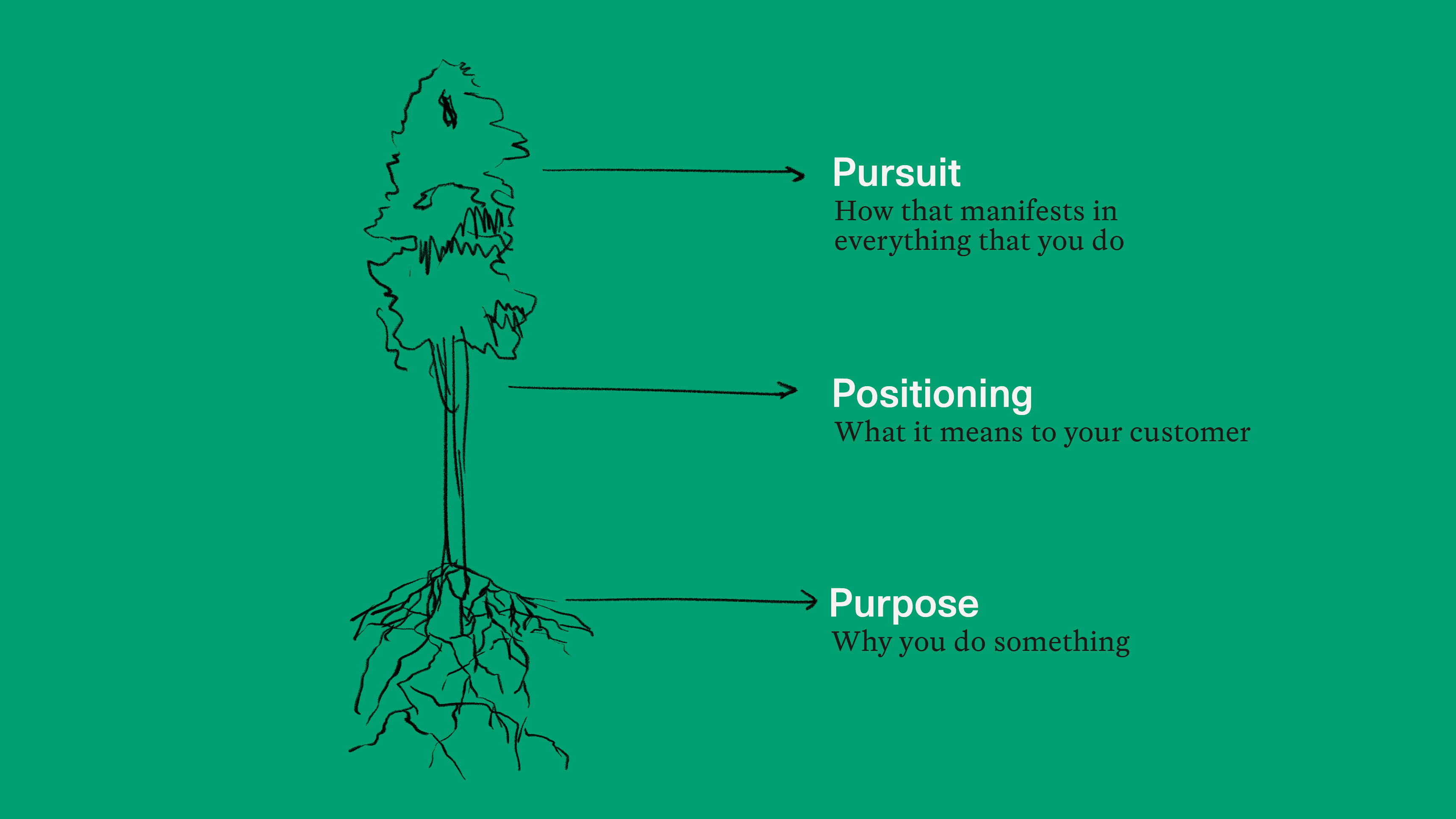Building a Legendary Brand Starts From Day One
The Marketing team at Sequoia India and Southeast Asia, which works closely with startups on brand strategy, has developed a framework that we call the 3 P’s of Brand Building to help founders and CMOs define and articulate their brand.
Gayatri Yadav and Oliver Lo
Published February 25, 2022

A great product solves a problem in a consumer’s life; a great brand builds emotional connections with consumers that endure over time. Brands have the power to differentiate, disrupt and inspire. Airbnb invites us to live like a local. Nike encourages us to ‘just do it’. They don’t just sell shoes – they sell ambition.
Many early stage founders put brand building in the ‘later on’ bucket – something to prioritize further down the track, once their customer base is strong and they have more momentum. But building an effective and sustainable brand starts from Day One. Every interaction you have, from your first pitch to your first customer, can build or tarnish your brand.
This doesn’t mean you need brand guidelines or a fully developed brand book in the early part of your journey. A brand is much more than a logo and visual identity. And building a brand is not the same thing as creating ads. It starts with the founder’s purpose, and the story behind their business idea. It’s about communicating how you are creating a difference in the world, in your market, and for your customers.
The Marketing team at Sequoia India and Southeast Asia, which works closely with startups on brand strategy, has developed a framework that we call the 3 P’s of Brand Building to help founders and CMOs define and articulate their brand.
This framework is emblematic of the sequoia tree, which lives up to 3,000 years and grows hundreds of feet in height. The P’s include “Purpose” (the roots of the tree), “Positioning” (the trunk) and “Pursuit” (the branches); exploring the role of each, and their connection to each other, helps crystalize what it takes to build a legendary brand that endures.

Purpose
Your ‘Purpose’ is why you do something, beyond profit. Defining and communicating your purpose is critical, because it forms the root of your entire brand.
Author Simon Sinek, best known for popularising the concept of ‘Why’ in his first TED Talk in 2009, which has had over 40 million views, provides a great explanation of ‘Why’ in his innovative concept, The Golden Circle.
Simon says most people, when they explain their business, start with ‘What’, then ‘How’, and finish with ‘Why’. Everyone knows what they do, some know how they do it, but few know why they do it. ‘Why’ is the purpose, the belief, the cause, the reason your business exists beyond profit.
Inspiring leaders and organisations reverse the order of information. For example, if Apple were like everyone else, a marketing message might say: “We make great computers (What). They’re beautifully designed, simple to use and user-friendly (How). Want to buy one?” The ‘Why’ is missing. It’s uninspiring.
But here’s how Apple communicates: “In everything we do, we believe in challenging the status quo, we believe in thinking differently (Why). The way we challenge the status quo is by making our products beautifully designed, simple to use and user-friendly (How). We happen to make great computers (What). Want to buy one?” It’s far more effective.
Airbnb also uses their ‘Why’ very effectively. Airbnb could simply talk about providing lower cost accommodation, with guests living in people’s homes. But Airbnb believes people should be able to belong anywhere and live like a local. It’s a disruptive brand idea, because travel has always been about escaping, not belonging.
We have many interesting examples of startups in the India and SEA region with a clearly articulated brand purpose and strategy.
Kunal Shah wanted to reward and celebrate the trustworthy and credit worthy individuals of India for paying their credit card bills, and to inspire others to be like them. So, he created CRED, a credit card bill payment platform that rewards its members for paying their credit card bills on time.
CRED is building a brand with that purpose – “a high-trust, low-friction platform enabling the most creditworthy Indians to improve their lives and lifestyles by managing money better” (Why). CRED is not just an app – it’s a community where trustworthy behaviour is rewarded (How). CRED members have access to wealth creation avenues and resources, events and rewards (What). It’s interesting that Kunal articulated his credo in a well-crafted purpose/mission statement on Twitter when he launched the company, proving it’s never too early to build your brand.
Last year, Whitehat Jr released what’s sure to become an iconic campaign, “Create like a Child”, which expresses a clearly articulated purpose – “Children are born to create not consume”. The campaign urges parents to maximise this time and let their children “build” amazing things.
In Indonesia, BeautyHaul is building a beauty brand called Somethinc that addresses the insecurity many people have about their looks through the belief that beauty is a unique way to express yourself, and your daily skin routine is a fun process, and not something to bring you down.
Gojek, which was founded in Jakarta, the home of traffic, has a brand borne out of a purpose to make life as friction free as possible, which they have done by developing technology that links up drivers, merchants and consumers, enabling them to help one another.
Chatri Sityodtong, the founder of One Championship, talks about the role of belief. “I want to share the extraordinary, against-all-odds life stories of the greatest martial artists so that the entire continent of Asia can be elevated with hope, strength, and inspiration in the same way I was in the bleakest moments of my life…my role models and real-life superheroes gave me the inspiration to fight the good fight for my dreams. I truly believe in the magic of hope, strength, and inspiration to change the world,” he writes on his blog.
People don’t buy what you do; people buy why you do it. Know your purpose and the rest will sprout from there.
Positioning
Positioning is about translating your purpose into a customer benefit. It is about moving from your context to your customer’s context.
Think of your positioning not in terms of offering a solution to a problem, but as an answer to an insight. For example, using Airbnb again, the problem might have begun with the shortage of affordable hotel accommodation in cities. The solution: rent someone’s home for your trip – it’s cheap and convenient. And that’s how many home rental companies positioned themselves.
Instead, Airbnb’s founders tapped into a millennial insight: tourist travel sucks; I wish I could get under the skin of the country and feel like a local when I travel. And so they developed the positioning “Belong Anywhere”- the idea that when you travel to a place, you should feel like a local and be able to belong in that place. It flipped the travel category on its head and proved to be a disrupting force to mainstream hotel brands.
And all of this comes from an acute understanding of who your customer is. And we don’t just mean demographics and behavioural segmentation – age, location, income, frequency of travel etc. We mean understanding them as a human being, their attitudes to travel (in the case of Airbnb’s category) and their key pain points in life. Understanding the attitudes of a millennial traveller was the foundation to developing Airbnb’s new positioning. No amount of demographics and quantitative data would have captured that insight.
Pursuit
Pursuit is how your company’s purpose is manifested in everything you do. Brand building is not just about advertising. It’s about every single association and experience to do with your brand, whether that be your customer support, product interface, a salesperson, or memes about you on Twitter.
Scott Galloway, a professor of marketing at the New York University Stern School of Business, and a public speaker, author, podcast host, and entrepreneur, has developed an interesting framework that he calls the “round-the-clock” model of brand building.
The clock model divides the many opportunities to build your brand into three stages. At the pre-purchase stage, touchpoints include TV, social media, content marketing, and your website. At the purchase stage, they include distribution, packaging, and user-generated content. Post-purchase, the touchpoints include customer service, loyalty programs, and customer relationship management. Every touchpoint is an opportunity to build your brand into something amazing.
For example, at the purchase stage, Apple has built its brand with the ritual of unboxing an immaculately designed product and packaging. Likewise, they turned Apple Stores into a place of worship and communion for their products as a lifestyle. Location-based Google search analysis indicates that the search term “Apple store near me” was the second most searched after “church near me”.
HubSpot has built much of its brand around the pre-purchase and post-purchase phases. At pre-purchase, it provides marketer resources and content downloads packaged with great SEO – driving discovery of much needed educational materials for digital marketers. At post-purchase, it operates the HubSpot Academy, Inbound & Grow conferences and provides certifications – all to further develop the learning and careers of marketers.
The main takeaway with Pursuit is that there is no one-size-fits-all for building your brand nor does it necessarily require large advertising budgets. Founders should focus first and foremost on how your brand is built through the entire customer experience.
Start from Day One
Brand building can be more difficult to measure than many marketing tactics, but it is the foundation upon which all those measurable tactics can be seeded to grow.
Successfully building a great brand does not necessarily require large budgets. Brand building manifests in everything you do. The ultimate goal is to build a brand that delivers a point of difference based on why you do what you do, responds to a clear customer insight, and garners love and respect from customers, investors, and other stakeholders because it has a clear purpose, position, and pursuit. This won’t happen overnight but it does have to begin from Day One.
Remember that every interaction you have is brand building, so consider your approach early. A brand needs to resonate with your customers, your market, and your team deeply, and getting the framework right from the beginning will help build a brand that will become the engine of growth for your business.
Key takeaways
- Brand building starts from day one
- People buy the “Why”, not the “What”
- Insight leads to positioning
- Brand building manifests in everything you do